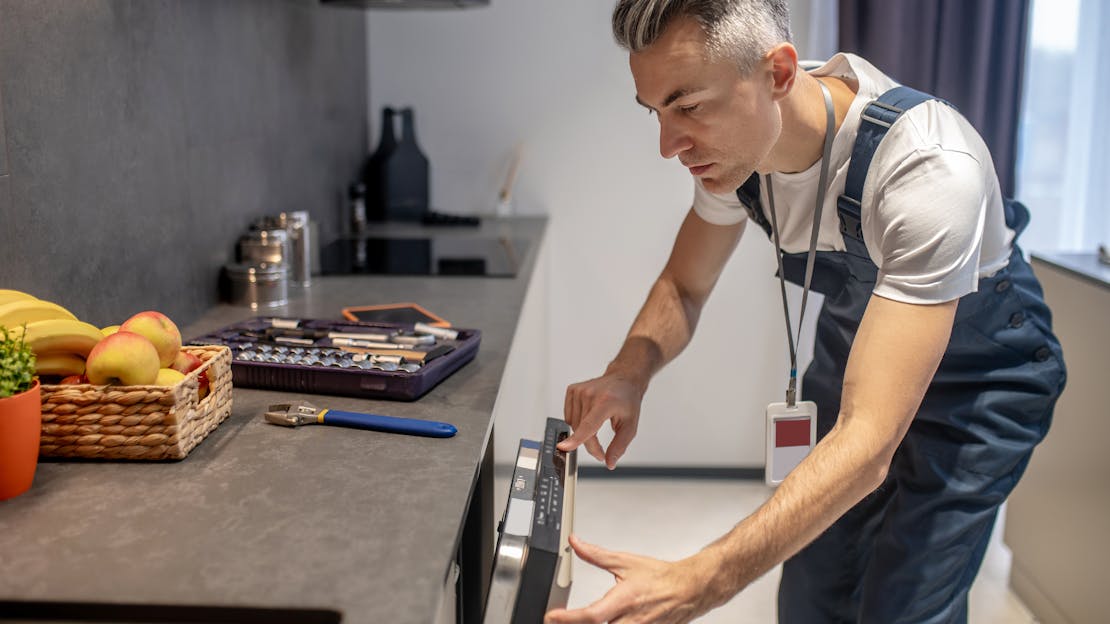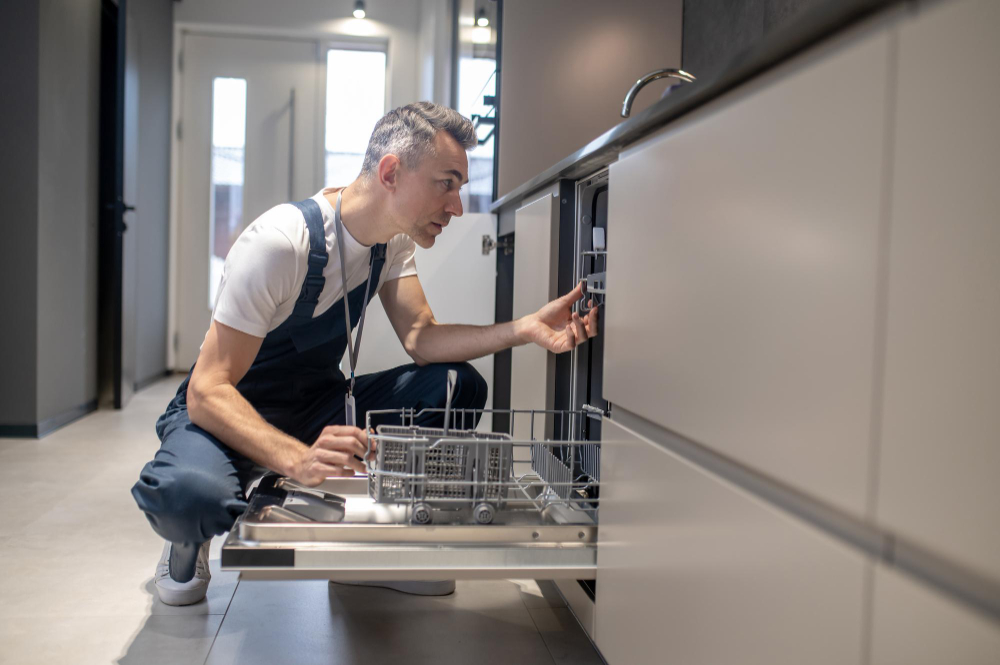
How to install an integrated dishwasher
Installing an integrated dishwasher involves several steps, and it's essential to follow the manufacturer's instructions provided with your specific dishwasher model. While the following steps provide a general overview of the installation process, the specific requirements and complexities can vary significantly depending on your dishwasher model and your kitchen's unique layout.
It is imperative to stress the importance of engaging the services of a certified and qualified engineer or professional technician for the installation of an integrated dishwasher.

Prepare the Area:
- Before attempting any installation, it is essential to switch off the power at the consumer unit.
- Remove any objects or items from the cabinet space designated for the dishwasher installation.
- Ensure that the water supply and drain lines are easily accessible.
Measure and Adjust the Cabinet Space:
- Accurate measurements of the height, width, and depth of the dishwasher space within the cabinet are crucial to ensure a proper fit.
- Adjustments to the cabinet space may be required, which might involve removing cabinet panels or trim pieces.
Install the Mounting Brackets:
- Most dishwashers come with mounting brackets. These brackets should be securely attached to the sides of the dishwasher using the provided screws.
Connect the Water Supply:
- The connection of the water supply line to the dishwasher's water inlet valve must be done accurately and securely.
Connect the Drain Hose:
- The attachment of the dishwasher's drain hose to the drain outlet on the dishwasher should be secure and free of kinks.
- The other end of the drain hose must be connected to your sink's drain or garbage disposal unit, and a hose clamp should be used to ensure a tight seal.
Level the Dishwasher:
- A spirit level should be used to ensure that the dishwasher is perfectly level both from front to back and side to side. The levelling feet should be adjusted as needed.
Secure the Dishwasher:
- As you slide the dishwasher into the cabinet space, it's important to secure it properly to the surrounding cabinets or countertop using screws, following the manufacturer's instructions.
Connect the Electrical:
- Connect the dishwasher to a suitable socket using the plug.
Test the Dishwasher:
- After restoring power at the consumer unit, run a test cycle to check for leaks or operational issues.
Finish the Cabinet Door Installation:
- The attachment of the cabinet door panel or decorative front panel to the dishwasher's door should be carried out strictly in accordance with the manufacturer's instructions. Integrated dishwashers are specifically designed to have custom panels that match your kitchen cabinetry.
Final Check:
- Perform a final check to ensure all connections are leak-free, and the dishwasher operates correctly
Can I fit an integrated dishwasher myself?
For your safety and to ensure a trouble-free installation, it is strongly recommended that you enlist the services of a qualified engineer or technician experienced in dishwasher installation. This will not only guarantee proper functionality but also ensure that all local codes and safety standards are met during the installation process.

Frequently asked questions
Do integrated dishwashers need a cabinet?
Are integrated dishwasher doors universal?
Do integrated dishwashers have adjustable feet?
Do integrated dishwashers come with door fixings?
Are integrated dishwashers a standard size?
How do integrated dishwasher doors fit?
Can you replace an integrated dishwasher with a freestanding one?
Are integrated dishwashers all the same size?
Top Selling Integrated Dishwashers from MyAppliances
Explore our sleek integrated dishwashers, delivering exceptional cleaning performance and seamless design integration. With advanced technology and customisable settings, dishwashing becomes effortless. Upgrade your kitchen with our integrated dishwashers today.
